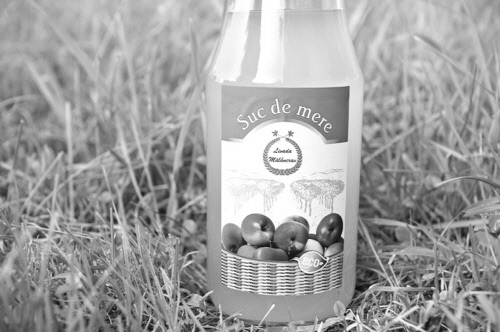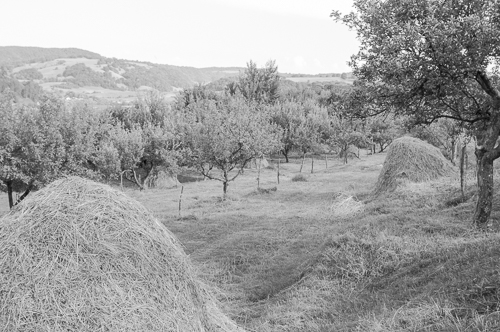Malancrav is another Saxon village where numerous remnants like inscriptions in German on the houses still exist. It is like Viscri located along a creek flanked by grassy verges with ducks and geese in and out of the water. In the evening we could watch a long procession of cows and some buffaloes heading home followed by the cowherds who had to make some stray cows go straight home.
Just above the village church, lots of terraces had been made in the hillside. Often, they were used for growing vines a long time ago, but have now fallen in disuse. Instead, in this village they were used for growing apple and pear trees. For maybe every 4 metres, another terrace had been made containing a long row of apple trees. In between some of the apple trees, large haystacks had been made showing that the locals try to grow something edible wherever it’s possible. Ascending to the top of hill and walking along it, I walked for maybe an hour without getting to the end of the orchard. According to the Mihai Eminescu Trust (MET) , the area of the orchard amounts to 200 acres which equals about 81 hectares.
The next day we visited a small apple and pear juice factory which was located near the church. Each autumn about 10-12 locals pick apples and pears for about a month bringing all the fruit down to the factory. Since many of the terraces were completely covered by hay, the workers probably have to carry the fruit to some meeting point where they are freighted down by car.
Since we visited the factory in June, there was no activity but we were told that they apply no herbicides or pesticides to the fruit trees, leaving everything to Mother Nature. Having brought the apples to the factory, they are put in a press in order to press out the apple juice. After having been pasteurised, the juice is bottled and labels are put on. Their products are for sale in Romania only.
In fact, the MET states that there are traditional varieties of apple, pear, plum and walnut trees in the orchard. The pear trees are often grafted onto quince rootstock since quince is more robust than pear trees. The MET bought the orchard in 2002 and the British Embassy in Bucharest donated juicing equipment, which was installed by a specialist, the same year.


